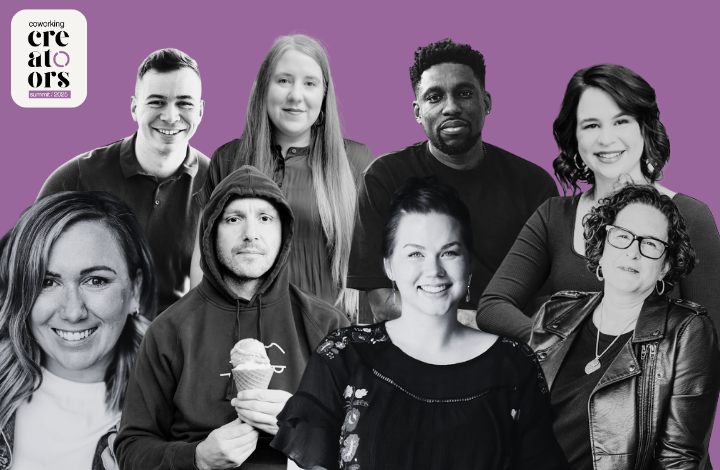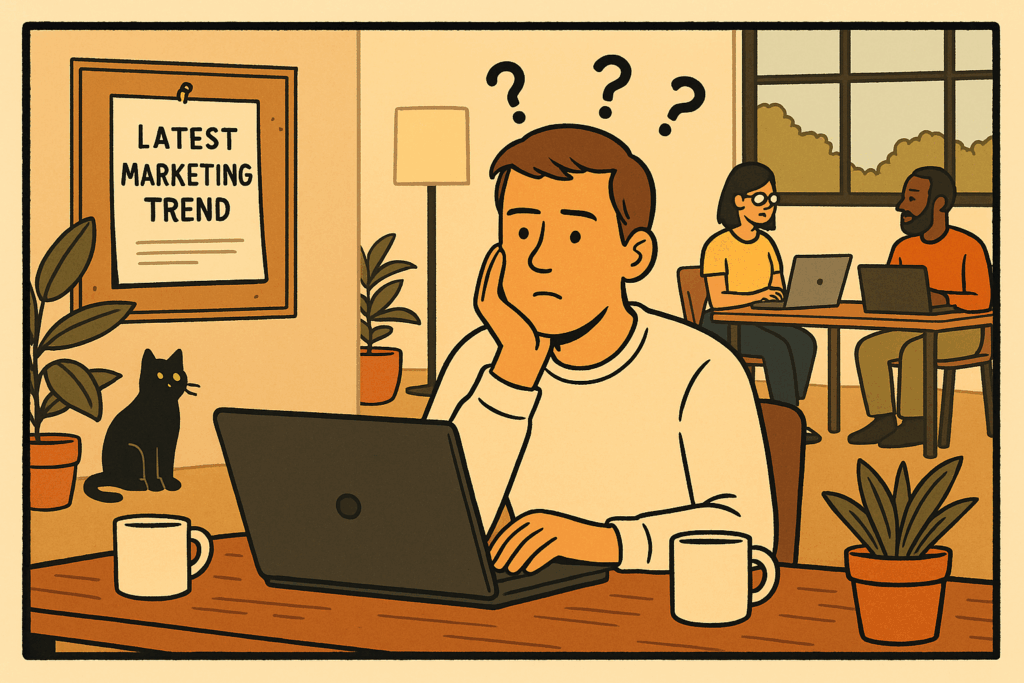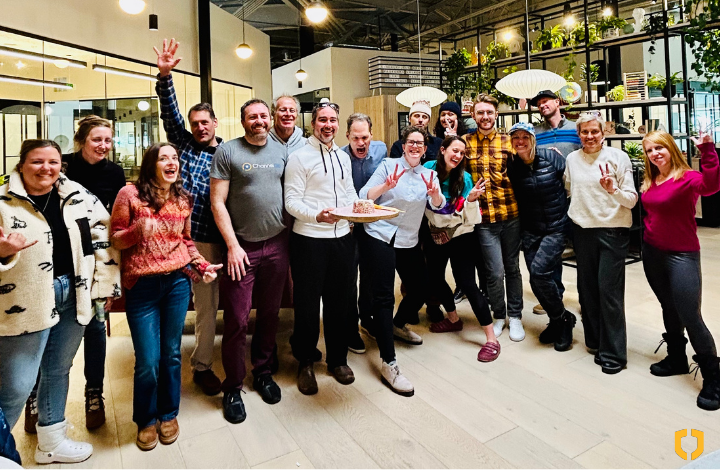In advance of the Coworking Creators Summit on October 23, we asked our Summit teachers to share their best insights into storytelling, getting content momentum, increasing creativity in your space, creating a strong brand voice, and more. And I’ll be teaching a session on differentiating your coworking space and brand with content. Don’t miss this opportunity.
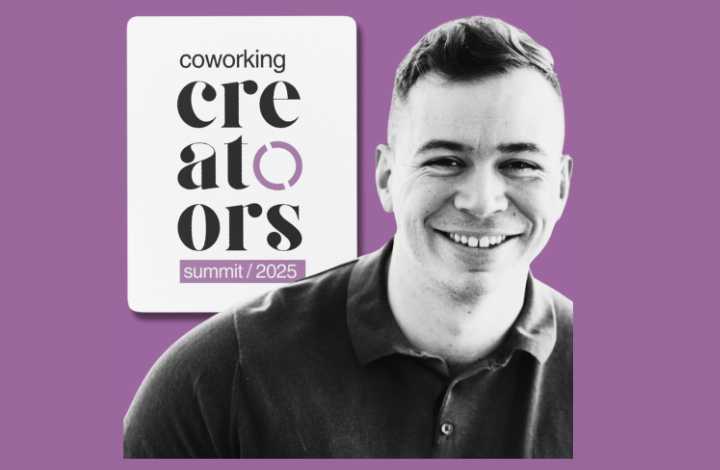
Taylor Mason on Content Distribution
Taylor Mason, founder of Talemaker, is a standout content marketer and strategist who is kicking off the Coworking Creators Summit with a session on content distribution for coworking spaces.
Here he shares his insights into streamlining content production, having your content all work together seamlessly, and going multi-channel.
1. What’s one mistake you see coworking spaces make with content distribution?
Lacking a repeatable process. Without one, things take 10x longer than they need to, and the outputs are often inconsistent. A repeatable, documented process—even a simple one—helps streamline content production and distribution, saves you from having to make it up from scratch each time, ensures nothing gets missed, and maximizes results. Plus, it makes it easier to hand this task off to someone else if you need to.
2. How do you prioritize which channels to use for content distribution?
The most commonly used content marketing channels for coworking spaces are blogs, email, and social media. The great thing is that they can all work together seamlessly with a simple distribution process. So, to help people get started, I recommended using your blog as your anchor content, then leveraging social media and email to amplify it. Once you’ve got that locked down, you can start adding new elements, like video, audio, and beyond, if you want to.
3. Can you share a quick win that instantly improves content reach?
Go multi-channel with your content distribution, including your blog, email, and social media. The more channels you use, the broader your potential reach. Each channel might have a slightly different audience, and leveraging them all helps “broaden the surface area” of your content. This gives your content the best chance of being seen by as many people as possible. For example, if someone doesn’t land on your blog post, they might see it on social. Likewise, if they miss it on social, they might catch it via email.
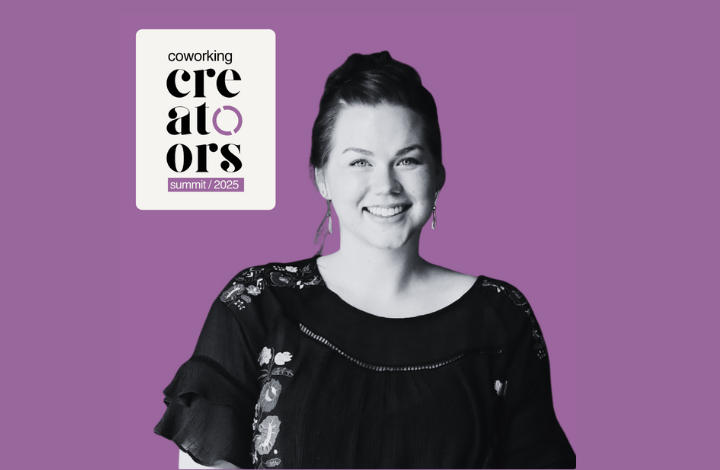
Lauren Urlacher on Increasing Creativity in Your Coworking Space
Lauren Urlacher is a brilliant artist, creative, and community manager at Fellow Coworking. Here, she shares her thoughts on tapping into creativity in your space, showing up creatively for your members, and how civil engineers and freelancers just might connect over creative opportunities.
1. Why is showing up creatively important for coworking pros?
Getting creative with your brand and messaging is the best way to show off your space’s personality. That’s how you set yourself apart from the competition and start attracting members who truly belong.
While you can outsource this work, the magic really happens when owners and operators do the storytelling. The audience can feel the authenticity. The more creative you get, the further you are from being generic, and that’s where us indie coworking brands thrive.
2. What’s one practice you recommend for tapping into creativity in a coworking space?
Know what kind of energy you need and when. One of the best things about coworking is having multiple environments under one roof. Need to do some creative brainstorming? Feed off the buzz of other people’s energy in the community area. Need quiet concentration? Enjoy some solitude in a conference room or quiet zone. There’s no need to force it in coworking when you can simply change your environment.
3. How can coworking operators cultivate a culture of creativity in their space?
A culture of creativity starts with the energy you bring as a space operator. Being willing to show up curious, try new things, and share your progress (no matter how good or bad) gives your members permission to do the same.
Once you start to create opportunities that tap into your members’ sense of play, the connections start to build themselves. Set up something simple like a paper snowflake cutting station, and all of a sudden the civil engineers are besties with the freelance writers. It’s just like watching friendships form on a playground.
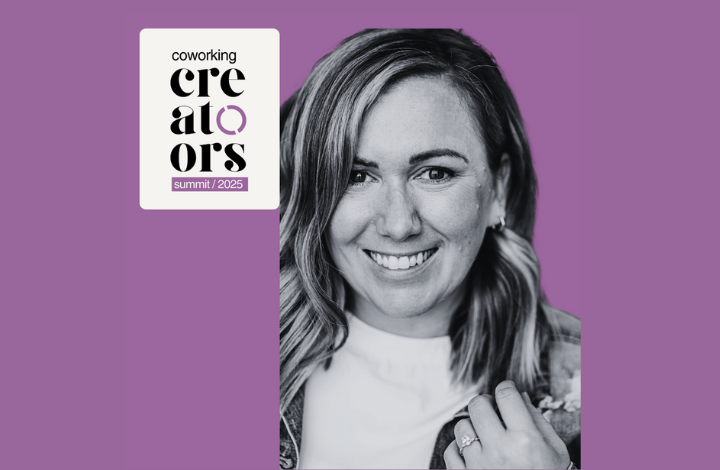
Dani Corbett on Capturing Great Photos in Your Coworking Space
How do you capture great photos in your coworking space?
Let’s ask Dani Corbett, founder of Lake City Photos, and an incredible brand photographer with a sharp understanding of coworking spaces and members.
1. What are some essential photos every coworking space should have?
Your coworking space needs more than photos of empty desks. You want potential members to feel what it’s like to be part of your space before they even walk in. Here are some ideas of what to highlight in your coworking space.
- Wide shots that show the layout and natural light
- Detail shots of the environment: think coffee setups, artwork, signage, and cozy corners
- Lifestyle photos with real people using the space while working, connecting, laughing
- Images of events or workshops (even if casual) to show the community in action
- Exterior shots to help people find you
You’re not just selling a space. You’re selling energy, momentum, and community. Your photos should reflect that.
2. How can space operators take better photos without expensive gear?
You don’t need a pro camera or even a pro photographer to get photos that work. Use what you have; an iPhone, natural light, and a bit of intentionality go a long way.
- Turn off overhead lights and shoot near windows during the day
- Wipe your phone camera lens to ensure colors and contrast are on point
- Use portrait mode for detail shots or individual people
- Add depth: get close to a plant or foreground object and focus past it
- Capture moments, not just spaces: people collaborating, pouring coffee, taking a call
A little planning makes your visuals feel thoughtful, not forced. And that authenticity builds trust. Real photos beat stock images every day.
3. What role do authentic images play in attracting new members?
A bigger role than most people realize. The truth is, people decide how they feel about your space before they ever schedule a tour. Your images are your first impression, and stock photos won’t cut it. In fact, stock photos reduce your authenticity and people’s trust in you.
Authentic images show that real people actually work there. That there’s a pulse to your space. And that matters. Because when someone’s looking for a coworking home, they’re not just looking for Wi-Fi and a printer. They’re looking for belonging—a workspace that is different from where they are working right now.
When your visuals feel relatable and human, it makes people more likely to see themselves in your space. And once they can picture themselves there, they’re already halfway to joining.
Your images could be the difference between a new client or losing a client. What do your current photos say about your space?
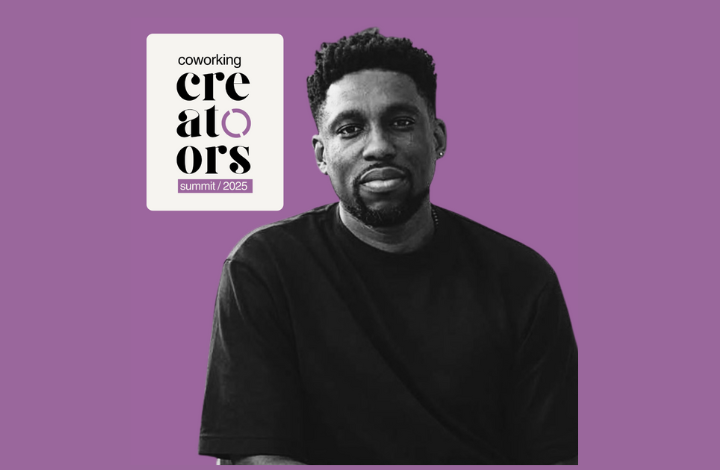
Dean Connell on enhancing your own creativity and creating spaces of connection
Dean Connell from I-AM.D.C. is an extraordinary human who has deep roots in coworking and workspace design, as well as a creative whose outlets include music, poetry, philosophy, and more, Dean is an industry standout and visionary leader.
Here’s a sneak peek into some of what he’ll teach at his Summit session, “Creative Work in Progress.”
1. How do you personally push through creative roadblocks?
I return to four words that became synonymous with my WeWork experience: We’ll figure it out. This became my methodology for approaching uncertainty. Constraints aren’t limitations, they’re invitations to be creative.
The more profound truth: everything moves, nothing rests. Therefore, creative blocks are temporary states in constant motion. The way through is to constantly iterate to make progress, even if it’s small. Mixed with a dose of persistence, the ideas compound into a suitable solution.
2. What does “creative work in progress” mean to you right now?
Creative work in progress means investing energy into doing creative work daily that reflects my complete self, not just my professional persona. After 20 years as an interior design pro and 13 years designing workspaces, I realized I’d been compartmentalizing Dean the designer from my curious, creative alter ego “Indi,” who is a music producer, poet, philosopher, and all-around creative soul.
Now, through my newsletter, I’m no longer waiting for permission to integrate these hidden parts into my work. It’s the shift from accumulating hours toward expertise to creating meaningful moments that matter for personal development.
I’m embracing what I call the tapestry principle: weaving all aspects of who you are into what you create, rather than hiding parts of yourself for professional credibility. At 41, I’ve only seen the tip—like an iceberg. Underneath, there is a grand design.
3. What’s one tip for coworking space operators to create spaces of connection and creativity?
Design moments, not square footage. Work isn’t a linear experience anymore. It’s a series of moments throughout someone’s day. Stop counting desks and start crafting experiences.
Remember: functional and beautiful designs are table stakes. The next generation of coworking must be a symbol for human connection, creativity, and collaboration in our AI-driven digital world.
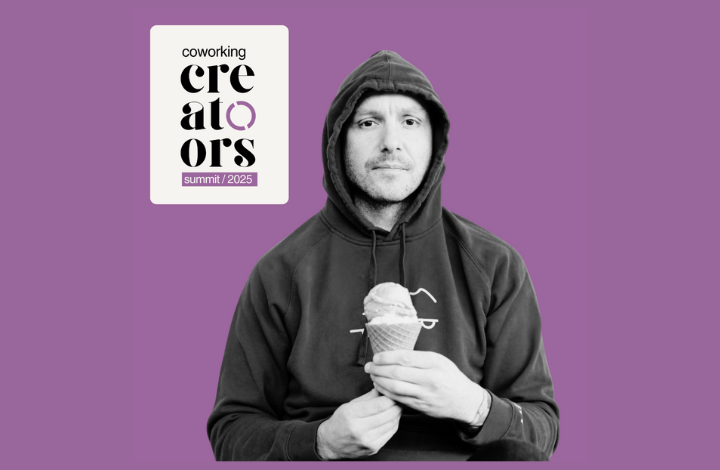
Garrett Tichy on Building a Strong Brand Voice
Garrett Tichy is a masterful brand builder who built one of the most recognizable coworking brands, Hygge Coworking, and has now co-founded Seemingly Overzealous Ice Cream.
In advance of the Coworking Creators Summit, Garrett shares what makes a brand feel authentic, the benefit of a great brand voice, and how coworking space operators can start creating a stronger voice and brand.
1. What makes a brand voice feel authentic instead of forced?
Whether an actual person or a persona, the voice needs to come from an active participant in whatever you are building. Your potential community members have a lot of choice in some markets and if they see themselves in the brand you have a greater chance of bringing them into your community.
2. Where should coworking spaces start when developing their voice?
First and foremost, be yourself OR let whoever is developing this voice be themself. It’s really exhausting to have to “turn on” a persona. It also runs a greater risk of inconsistencies between who you are and what you’re putting into the world.
Also, don’t be so rigid that you leave no space for someone to see themselves in the brand. That may sound weird but some brands draw such hard lines that they cut people out without even knowing it. Leaving this space allows people to feel a part of it, embody it, and also parrot your voice while adding their own flair.
3. How does it benefit a business when the brand voice is done really well?
We’re all vying for people’s attention. A great brand voice can separate you from the numerous competitors in your market. It’s really that basic, but it’s true.
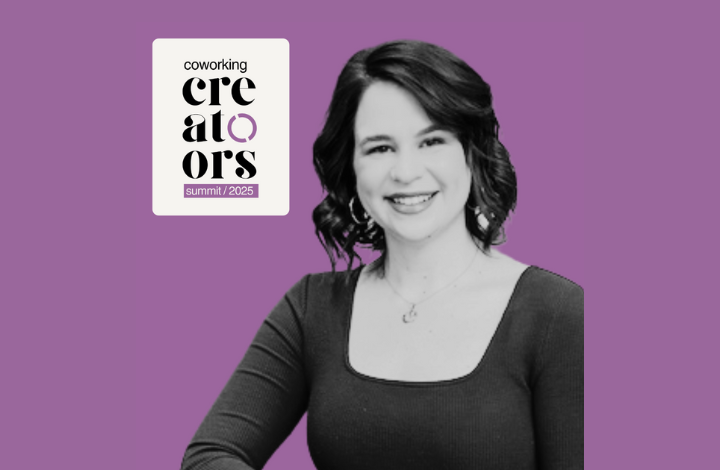
Kristen Fields on the Power of Storytelling for Coworking Spaces
Kristen Fields from Knuckledragger Studios is a powerhouse creator, producer, and storyteller. Here, she shares her insights into the power of storytelling, mistakes brands make, and a tip to help coworking pros tell better stories.
1. Why is storytelling such a powerful tool for coworking brands?
Story is the thing that connects us all. We use stories from the moment we’re born until the moment we die. Whether it’s sharing anecdotes about work, or leisure, family, or friends, we all connect to each other through stories. They help us build empathy and reinforce communal bonds—and what more could you want for your coworking community than to have your members feel deeply connected (and to tell stories about your space!).
2. What’s one storytelling mistake you see brands frequently make?
Not knowing who they’re telling stories to, and how that impacts the stories they tell. Additionally, not recognizing that there is a story in every piece of marketing material you’re using. From emails to social to everyday interactions, storytelling influences it all.
3. Can you share a quick tip to help coworking space operators tell better stories?
Think of the most compelling storyteller you know: an actor, a friend, a family member. Think about the way they tell stories. What makes it so memorable? Do they use fantastic imagery? Do they include commentary that makes you laugh out loud? Do they know every piece of the history to shade in the missing pieces? Now play mimic and try telling a story about your space the way they would tell it. Record yourself doing it and compare it to what you’re currently doing. How does it change? What new glimmers did you find?
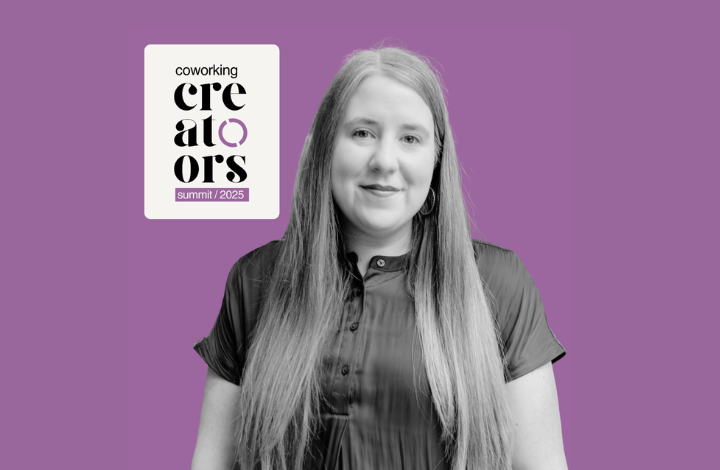
Amanda Leffew on Building Content Momentum
My longtime collaborator Amanda Leffew is a quiet force in my business and the co-founder of the Coworking Creators Summit. She’s smart, creative, strategic, and I always ask her opinion on moves I’m making—large or small.
At the Coworking Creators Summit, Amanda is teaching a session on building content momentum when you feel invisible (Who can’t relate to that?). In advance of the Summit, Amanda shares her insights into cutting through the noise, quick creative actions you can take right now, and how slow doesn’t mean it’s not working.
1. What’s the biggest challenge new content creators face?
It’s not coming up with ideas, it’s figuring out how to cut through the noise. Most new creators try to do too much too fast, every platform and every trend all at once. The smarter play is to pick one channel, pick one theme, and commit to it for 90 days. Consistency beats chaos. People start to recognize your voice when they know what you stand for and where to find you.
2. How can space operators keep momentum when progress feels slow?
Slow does not mean nothing is working. Momentum comes from showing up, not from going viral. If it feels quiet, set up a content rhythm you can sustain. Start a weekly series like a quick reel showing what is happening in the space today or a regular member spotlight. Repurpose everything. A single blog post can fuel your socials for a week. When you feel stuck, simplify and stay consistent. That’s what compounds over time.
3. What’s one small creative action that can help a coworking space gain visibility today?
Grab your phone, film a 10 second clip of something real happening in your space, add text on screen, and post it. Do not overthink it. It could be a member celebrating a win or just the vibe on a Monday morning. The goal is not perfection, it is visibility, and people connect fastest when they can actually see themselves in your space.
🚀 Level Up Your Coworking Content
The Coworking Creators Summit is the place to be for coworking operators, marketers, content creators, and community managers. Plan to leave with actionable tips as well as big picture strategies to level up the marketing and content in your coworking space.
Get your pass today: coworkingcreators.com

